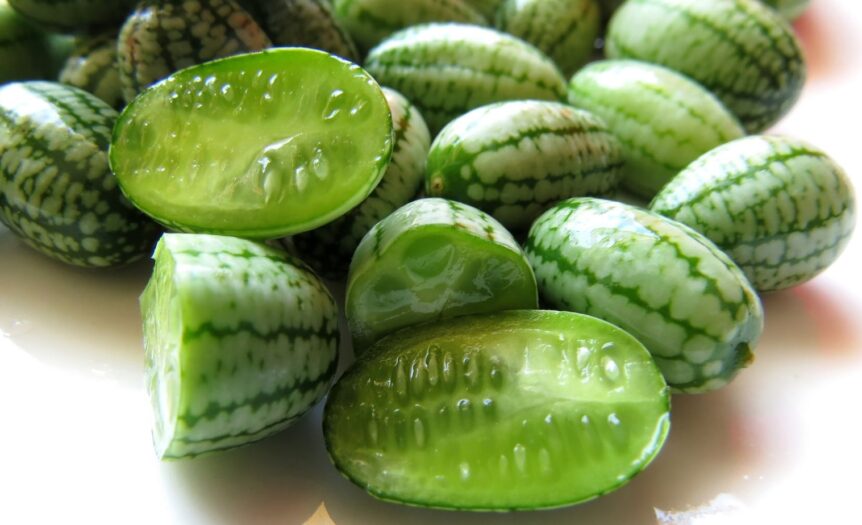Nutritional Benefits of Cucamelons
Cucamelons, also known as “Mexican sour gherkins” or “mouse melons,” are small, grape-sized fruits that resemble tiny watermelons. They offer a range of nutritional benefits, making them a healthy addition to your diet.
- Rich in Antioxidants: Cucamelons are packed with antioxidants, including vitamin C and lycopene. Antioxidants help protect your body from oxidative stress and reduce the risk of chronic diseases.
- Low in Calories: With their low-calorie content, cucamelons are an excellent snack for those looking to manage their weight. They are also high in water content, which can help keep you hydrated.
- Good Source of Fiber: These little fruits provide a decent amount of dietary fiber, which is essential for digestive health. Fiber helps regulate bowel movements, lowers cholesterol levels, and aids in weight management.
- Contains Vitamins and Minerals: Cucamelons are a good source of vitamins A and E, which are important for skin health and immune function. They also contain potassium, which supports heart health and helps maintain proper electrolyte balance.
- Hydration and Detoxification: Due to their high water content, cucamelons can help with hydration and act as a natural diuretic, promoting the removal of toxins from the body.
Where to Plant Cucamelons
Cucamelons are relatively easy to grow and can thrive in various environments. When planting cucamelon seeds, choose a location with well-drained soil and plenty of sunlight, as these plants require at least 6-8 hours of direct sunlight each day to flourish. Start seeds indoors 6-8 weeks before the last frost date, or sow them directly into the garden once the soil has warmed to at least 70°F (21°C). Cucamelons can be grown in the ground or in containers, making them versatile for different garden setups. They prefer slightly acidic to neutral soil pH and benefit from consistent moisture, so regular watering is important, especially during dry spells. Here’s where and how to plant them:
- Climate and Soil: Cucamelons prefer warm, sunny climates. They thrive in well-drained soil with a neutral to slightly acidic pH. Before planting, ensure the soil is rich in organic matter.
- Planting Time: Start cucamelon seeds indoors about 4-6 weeks before the last frost date in your area. Once the danger of frost has passed and the soil has warmed, transplant the seedlings outdoors.
- Location: Choose a location with full sun, as cucamelons require at least 6-8 hours of direct sunlight daily. They can be grown in the ground, in raised beds, or in containers.
- Support Structure: Cucamelons are vining plants that require support to grow. Use trellises, stakes, or fences to support the vines and keep the fruits off the ground. This also makes harvesting easier.
- Watering and Care: Water cucamelons regularly, especially during dry periods, but avoid waterlogging the soil. Mulching around the base of the plants can help retain moisture and suppress weeds. Fertilize sparingly with a balanced fertilizer.
- Harvesting: Cucamelons are ready for harvest when they are about the size of a grape, firm, and bright green. They can be eaten fresh, pickled, or added to salads.
Cucamelons are a unique and nutritious fruit that can easily be grown in your garden. They offer a variety of health benefits and can be a delightful addition to your meals. Whether you’re a gardening novice or a seasoned green thumb, cucamelons are a rewarding plant to grow and enjoy.










